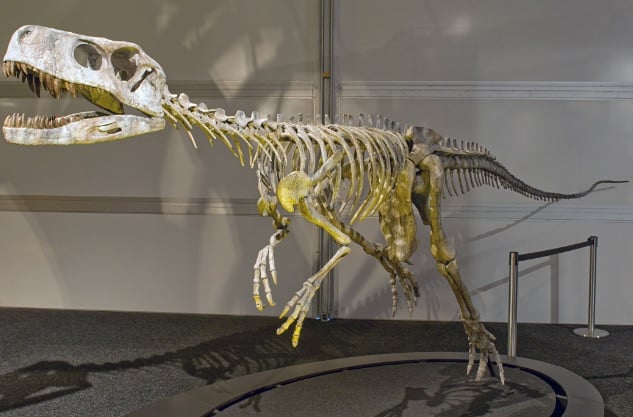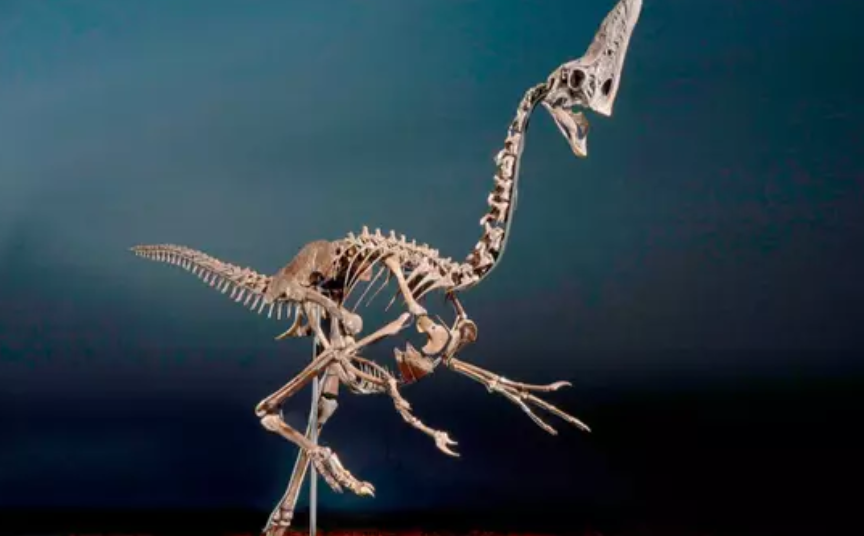Scientists Discover a New Dinosaur in Brazil!

© Eva Kröcher for Wikipedia
Talk about a real-life Jurassic Park!
Imagine discovering a whole new species of dinosaur not from fossilized bones, but from footprints left behind millions of years ago. Sounds like something out of a movie, right?
Well, scientists in Brazil have recently made an incredible breakthrough by identifying a new dinosaur species solely from footprints found in the region.
But, how was it found? And how was it preserved until now?
New Dinosaur in Brazil Discovered
A new species of dinosaur was discovered in Brazil based on footprints found in the city of Araraquara, as reported by BBC.
In the 1980s, Italian priest and paleontologist Giuseppe Leonardi made a significant discovery in Brazil’s Botucatu Formation. They found a series of dinosaur footprints, referred to as “trackways.” Moreover, these fossilized imprints, found in ancient sandstones, suggested the existence of an unidentified dinosaur species. It also offered valuable insights into prehistoric life.
Where Did This Brazil Dinosaur Discovery Come From?
Motivated by his curiosity and passion for paleontology, Giuseppe Leonardi diligently collected and documented the dinosaur trackways he discovered in Brazil’s Botucatu Formation.
Additionally, in 1984, he generously donated these specimens to Brazil’s Museum of Earth Sciences for future analysis and preservation.

After years of careful examination and comparison with known dinosaur tracks, researchers found that the footprints discovered by Giuseppe Leonardi in Brazil’s Botucatu Formation were distinct from any previously documented.
Moreover, the footprints featured long, slender toes and a wide stride. This indicated that they belonged to an agile dinosaur adapted to desert environments.
The Study
In a landmark study published in 2023, scientists led by Giuseppe Leonardi officially identified and named a new dinosaur species, Farlowichnus rapidus. This translated to “Fast Farlow’s track.” Their research showed that Farlowichnus rapidus was a small, agile carnivore. Moreover, it inhabited the arid environments of early Cretaceous Brazil around 125 million years ago.
Researchers identified the new species, Farlowichnus rapidus, as a small carnivorous animal comparable in size to a modern-day seriema bird, approximately 60-90 cm (2-3 feet) tall.
What Happened After the Discovery?
The discovery of Farlowichnus rapidus shows what it means to preserve and study fossil trackways. These provide crucial insights into the diversity and behavior of ancient dinosaurs. These footprints serve as a testament to the remarkable adaptations and resilience of life during Earth’s prehistoric epochs.

The discovery of Farlowichnus rapidus, published in the journal Cretaceous Research, shows that the dinosaur was a swift reptile. It traversed ancient dunes, as suggested by the significant distance between its footprints. This is all according to a statement from the geological service.
The footprints discovered from the early Cretaceous period, dating back 100 to 145 million years ago, are distinct from all other known dinosaur footprints, according to paleontologist Rafael Costa from MCTer.
What do you think of this Brazil dinosaur discovery? Do you think there are other fossils out there that we don’t know about?
You might also want to read: How Are Dinosaur Farts Linked to Global Warming?


